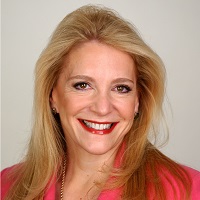The Agony and Ecstasy of Retirement Living in a Pod
Living alone is expensive, and it can be lonely, too. A group living situation opens up a lot of happy possibilities, even if it can come with some downsides.


I have been writing about a new way of living in retirement: Pods. Why? Because according to Northwestern Mutual’ s 2018 Planning & Progress Study, 21% of Americans have nothing saved at all for their golden years, and a third of Americans have less than $5,000.
I’m not going to lecture you about the fact that the way you may have planned to live in retirement will not pan out. What I’m doing is offering you a future that could be spent with friends and family while sharing expenses, a future of ecstasy.
The Pod
What’s a Pod? It’s a shared-living arrangement that offers a safe place, like peas in a pod — protected, close to others, warm and cozy. It’s pooled skills, pooled resources, with lives as separate and individual as you want to make them. It can be a close-knit group of friends — women friends, in the case of my planned Pod, but not necessarily. You can even join, or form, a Pod as a couple.

Sign up for Kiplinger’s Free E-Newsletters
Profit and prosper with the best of expert advice on investing, taxes, retirement, personal finance and more - straight to your e-mail.
Profit and prosper with the best of expert advice - straight to your e-mail.
A Pod is also the term used to describe a group of dolphins — creatures that have the whole ocean to roam and new horizons to explore every day, while at the same time knowing that they are not alone. There’s a built-in support group that dolphins have for security and companionship. Dolphins work together to gather food, and they team up for protection. Like us, they’re social.
It’s not so much a structure as a concept. A Pod can be whatever you make it, if you remember those two goals — financial security and companionship.
For me the prospect of living in a Pod gives me a feeling of ecstasy when looking forward to my later years, instead of experiencing that overwhelming feeling of dread of isolation and loneliness.
The Ecstasy
Take a serious look at your assets and your expenses. How much more would you need to have to spend two weeks, or even one month a year in that little place on the Gulf Coast, painting landscapes? Or, digging for dinosaur bones in Montana? Or, taking the grandkids to Orlando to visit Disney World? Or, holing up by yourself in that little cottage on the coast of Maine, writing that novel that will make you the next Stephen King or Jessica Fletcher. (They both did it in Maine, after all.) Or, knowing that as you sit at home on your porch watching a sunset, or in a cozy room watching Netflix, that your bills are paid and you have enough left over for at least a couple of items in a new fall wardrobe?
If the difference is one that you could make up if some of your core expenses were shared by living in a Pod, then… perhaps… Hello, Orlando, Hello Mickey!
There are many designs for a Pod. You can share a house. You can get adjoining houses in a retirement community and pool certain essentials. You can do the same thing in your old neighborhood, with the people you grew up with and know well. You can even make a multigenerational family Pod.
I didn’t invent this concept, we have all watched The Golden Girls; I’m just suggesting that you think about this if you don’t feel confident you’ve saved enough for retirement – or if you want a retirement that’s more luxurious, fun and fulfilling than you could otherwise afford. All Pod life asks for is the ability to compromise (and a lot of good humor). In return, it can give you the life that you want.
The Agony
Now for the grueling part: Downsizing. If you decide that Pod living is for you, it’s time to get that dumpster. And frankly, if you think you should be downsizing, then you should be. Yes, it’s hard to let go of the roomful of stuffed animals and Katy Perry posters that your daughter is not planning to decorate her new apartment with. Or, the books you’ve been buying and putting on shelves for the last 40 years, and my, they do take up a lot of space now, don’t they?
This is an area where a Pod can be a surprising help. For one thing, it will focus your thoughts on the space you’ll be moving to, and how much you’ll need to downsize to fit into it. For another, it’s amazing how helpful a good friend can be in reassuring you that you really can live without that stoneware dinner set or those commemorative coins that were supposed to increase in value but never did. Or, sometimes, they can reassure you that you don’t have to jettison something: “Say, I love to read real books and those will look wonderful in our new common room.”
Downsizing is one of the biggest issues confronting empty nesters moving on to the next phase of their lives. We’ve spent the first two-thirds of our lives accumulating. Accumulating furniture. Accumulating art. Accumulating books and records and CDs and knickknacks and Hummel figurines and cars and boats and cottages by the lake. I know that there can be sentimental value to these things, but the act of accumulation must stop. Remember, to everything, there is a season. A time to cast away stones, and a time to gather stones together. And as we move toward retirement, which may well be as much as one-third of your total lifespan, it’s time to cast away stones; they are weighing you down.
If you have read this far, Pod life may be something to think about. More articles on this topic will follow!
Get Kiplinger Today newsletter — free
Profit and prosper with the best of Kiplinger's advice on investing, taxes, retirement, personal finance and much more. Delivered daily. Enter your email in the box and click Sign Me Up.

Neale Godfrey is a New York Times No. 1 bestselling author of 27 books that empower families (and their kids and grandkids) to take charge of their financial lives. Godfrey started her journey with The Chase Manhattan Bank, joining as one of the first female executives, and later became president of The First Women's Bank and founder of The First Children's Bank. Neale pioneered the topic of "kids and money," which took off after her 13 appearances on The Oprah Winfrey Show.
-
 Designing Your 'Immortal' Financial Plan
Designing Your 'Immortal' Financial PlanExplore an approach that offers solutions for those navigating the intersection of longevity, fulfillment and financial security.
By Dennis McNamara
-
 How to Protect Your Privacy While Using AI
How to Protect Your Privacy While Using AIHow to keep your information and finances safe while using AI, including ChatGPT and Perplexity.
By Bob Haegele
-
 A QLAC Does So Much More Than Simply Defer Taxes
A QLAC Does So Much More Than Simply Defer TaxesHere are the multiple ways you can use a QLAC, from managing retirement risks to creating income for specific retirement needs and wants.
By Jerry Golden, Investment Adviser Representative
-
 Self-Directed Brokerage Accounts: Retirement's Hidden Gem?
Self-Directed Brokerage Accounts: Retirement's Hidden Gem?SDBAs are underused and have a reputation for being risky, but when managed carefully they can help you grow your wealth faster than your company's 401(k).
By Scott M. Dougan, RFC, Investment Adviser
-
 Should You Hire a Public Adjuster for Your Insurance Claim?
Should You Hire a Public Adjuster for Your Insurance Claim?As natural disasters strike more often, insurance clients are asking, 'What should I do, or who should I hire, if my insurance company is jerking me around?'
By H. Dennis Beaver, Esq.
-
 Tips to Help Entrepreneurs Create Self-Sustaining Businesses
Tips to Help Entrepreneurs Create Self-Sustaining BusinessesWith the right processes and people in place, a truly sustainable business can be efficiently passed on to a successor and run profitably on its own.
By Jason L Smith, CEP®, BPC
-
 Navigating Annuity Taxation: A Guide for Financial Advisers
Navigating Annuity Taxation: A Guide for Financial AdvisersUnderstanding the essentials of taxation in retirement income strategies involving annuities helps ensure positive outcomes for clients.
By Jake Klima
-
 How Baby Boomers and Gen Xers Are Redefining Retirement Living
How Baby Boomers and Gen Xers Are Redefining Retirement LivingBoth generations need to embrace change and leverage real estate as a dynamic asset in their retirement planning. Here's how financial advisers can help, too.
By David Conti, CPRC
-
 How Good Advisers Manage Risk in Challenging Markets
How Good Advisers Manage Risk in Challenging MarketsThey understand the difference between what might be real challenges to an investor's strategy and fear brought on by market volatility.
By Ryan L. Kirk, CFA®
-
 Financial Planning's Paradox: Balancing Riches and True Wealth
Financial Planning's Paradox: Balancing Riches and True WealthWhile enough money is important for financial security, it does not guarantee fulfillment. How can retirees and financial advisers keep their eye on the ball?
By Richard P. Himmer, PhD